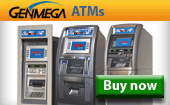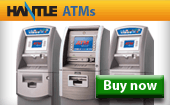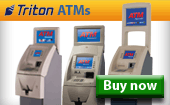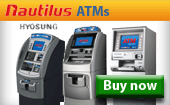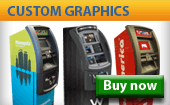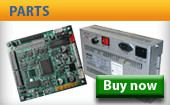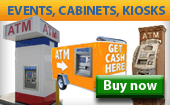List of articles | Next article
March 1, 2003
Twin Cities Business Monthly
ATM Network is one of the fastest-growing money dispensers in the U.S.
Phil Rock, founder and CEO of ATM Network, started his Minneapolis-area business selling automatic teller machines with a two-person staff. Now with 20 employees and a network of contract service technicians around the country, Rock and his staff have placed close to 2,000 ATMs in about 42 states, about 850 in Minnesota. That puts the company at No. 11 nationally in ATM company rankings. He credits his success to staying focused, taking growth slowly, and not overhiring: “Typical companies of our size will have double the employees. I say we’re lean and mean and clean.”
The California-raised Rock moved to Minnesota in 1996 after spending three years selling ATMs for his brother’s Oregon-based company. Minnesota appealed to him because of its central location for his new business venture and its proximity to his extended family. It also was a propitious time to start his firm: That year the federal government deregulated the ATM industry, allowing nonbank machines to add surcharges to their dispensing services. Most ATM Network machines range in price from $4,000 to $7,000, and 95 percent of retailers choose to buy rather than lease. Typical customers include convenience stores, supermarkets, bars, restaurants and coffeehouses. (The firm also places ATMs at special events, such as outdoor music festivals.)
Owners and leasers stock the machines with money themselves, keeping most of the surcharges as profit. “We always say that if you have 100 customers or more coming through your business every day, an ATM will generally pay for itself and be successful for you,” Rock says. ATM Network is a middleman between the ATM owner or leaser and the banks. “We make our money on service contracts and getting a small percentage of the transaction revenue,” Rock says. “What the merchant gets in return is a fully staffed, highly reputable ATM provider.” His firm generally breaks even on its machine sales.
For retailers, having an ATM on the premises means more cash in customers’ pockets. “And when the customer has more money in his hand, he will spend more money in the business that he is in,” Rock says. He also notes that retailers with ATMs can opt for a no-checks policy without turning away a lot of customers. Rock estimates that 65 percent of all banking in America today is occurring through cash machines. ATM Network expected 2002 revenues of $10 million and a 20 percent growth in gross transaction revenue over 2001. Rock notes that his company, which remains independent in a consolidating industry, is considering making some acquisitions, primarily of smaller independents. Don’t expect ATM Network to stay No. 11 for long.
